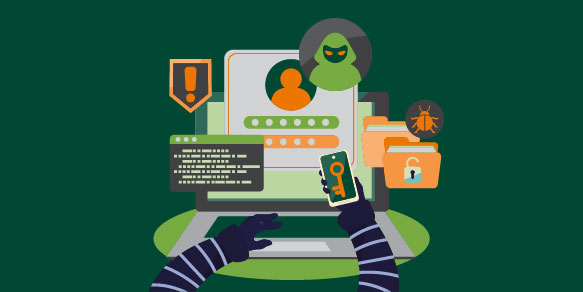
In recent years, state and local courts across the United States have been increasingly targeted by cybercriminals. From ransomware attacks to data breaches, these cyberattacks are growing in frequency and intensity, putting sensitive court data, public safety, and even justice itself at risk. Over the past 18 months, court systems in states like Kansas, Florida, and Pennsylvania have been hit with major attacks that caused significant delays and disruptions. Some attacks, such as the one in Kansas, took months to recover from and cost millions of dollars.
These incidents have highlighted a critical vulnerability in our public institutions, which, often underfunded and understaffed, are struggling to keep up with the growing sophistication of cybercriminals.
The Impact of Cyberattacks on Courts
Cyberattacks targeting courts aren’t just a digital inconvenience, they’re a matter of public safety and justice. When hackers infiltrate court systems, they can lock out legal professionals, law enforcement, and the public from accessing vital information. For example, in Kansas, a cyberattack in October 2023 left courts without access to case management systems and online filings for months in all but one of the state’s 105 counties. This affected everything from criminal history searches to the ability to issue protection orders, with serious consequences for domestic violence victims, law enforcement, and ongoing legal proceedings.
These attacks not only disrupt the justice process but also push back critical services like background checks for new hires. When courts can’t access records or verify information in a timely manner, it delays employment processes and can risk public safety.
Background Screening: A Key Tool in Preventing Insider Threats
While protection techniques are essential, background screening plays a critical role in reducing the risks posed by insiders. Cyberattacks are not always the result of external threats. Sometimes, they are carried out by individuals who already have access to the system.
Here’s how background screening fits into the broader strategy for cybersecurity in courts:
-
- Screening for Cybersecurity Experience and Risk – In a judicial system, employees, contractors, and service providers often have access to sensitive data, making it crucial to screen them for any history of cybercrimes or unethical behavior.
- Detecting Insider Threats According to experts, insider threats are often more dangerous than external attacks. Background screening helps identify employees who may have a history of negligence or malicious intent.
- Credential Verification for Staff Cybersecurity personnel are the frontline defenders in any court system, but hiring unqualified staff can lead to vulnerabilities. Screening individuals for certifications and past professional experience ensures that they have the expertise needed to protect from cyberattacks.
- Ongoing Monitoring of High-Risk Employees Cybersecurity isn’t a one-time check; ongoing monitoring is essential. Courts can implement regular background screening for employees who handle sensitive information.
The Intersection of Cybersecurity and Background Screening
Courts must recognize the crucial role of background screening in securing sensitive data. By properly screening employees and cybersecurity personnel, courts can reduce the risk of insider threats and ensure that only trusted individuals have access to systems.
As the frequency and sophistication of cyberattacks continue to rise, the need for a comprehensive cybersecurity strategy (both technical safeguards and human resources oversight) has never been more urgent. Investing in protection techniques and thorough background screening is the only way to protect our courts and the justice system they uphold.